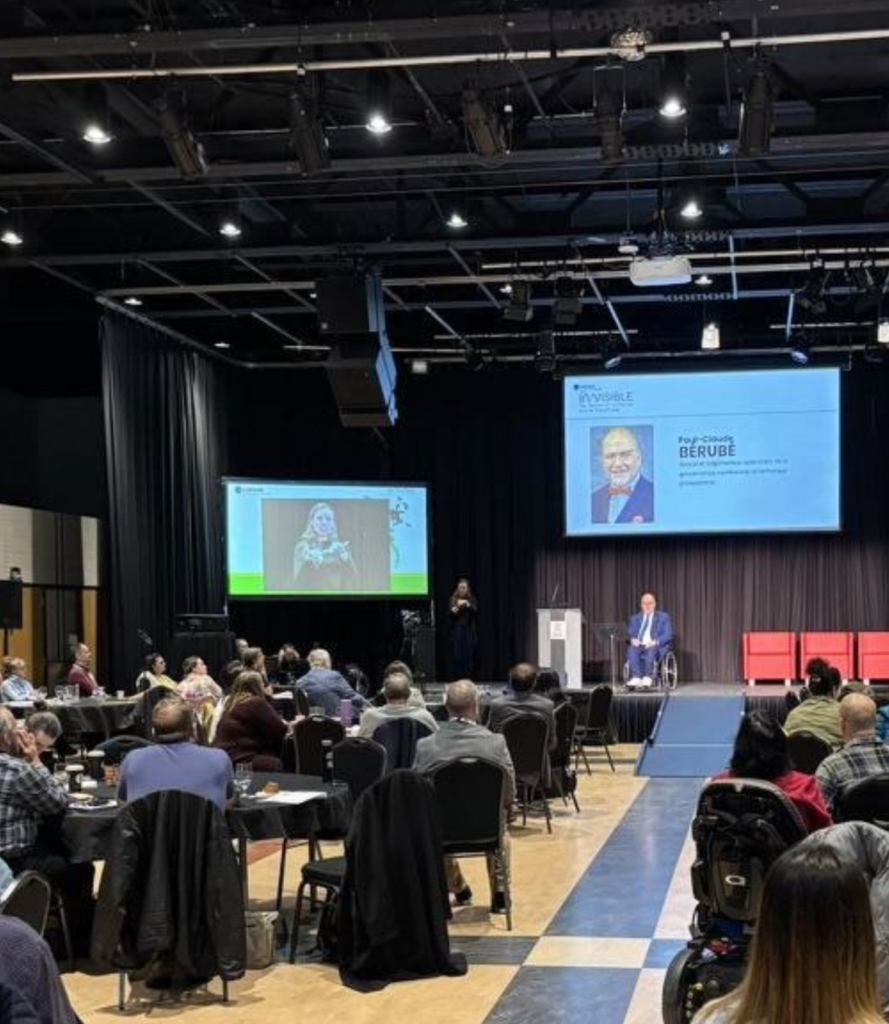
What is an accessible and inclusive employer?
An accessible and inclusive employer provides equitable opportunities for all staff, regardless of their abilities. This involves putting in place policies, practices and work environments that promote success, equal opportunity, respect, well-being and acceptance of every individual. By adopting a universal accessibility approach, the employer no longer simply adapts to a few individuals, but ensures that all team members can thrive in a barrier-free work environment.
Overview of the situation
Persons with disabilities remain under-represented in the workforce. They have a lower employment rate than that of the general population (51.1% versus 79.3%) and more often hold precarious jobs (temporary, on-call or part-time) at twice the rate of the general population. Although their professional constraints vary, they share common challenges, including job searching, professional integration and work relationships. To promote inclusion, it is imperative to challenge prejudices and adapt certain practices.
Barriers that employers can address:
-
Lack of workplace accessibility
-
Lack of accessible communication tools
-
Lack of flexibility in work policies
-
Limited access to reasonable accommodations
-
Cognitive biases or restrictive beliefs throughout the employment cycle
-
Discrimination (direct, indirect or systemic)
An accessible and inclusive workplace helps reduce or eliminate these barriers, contributing to an environment where everyone can develop freely.
Standards and obligations
There are frameworks to guide organizations in creating more inclusive practices. Some are mandatory, while others encourage organizations to go further.
Good practices to improve the employment component of your action plan
Becoming an accessible and inclusive employer is not always easy. Here are some concrete steps to enhance your action plans. These suggestions are neither exhaustive nor applicable as is. As such, it’s best to adapt them to the reality of your organization.
Accessibility benefits all staff, but it is crucial for certain profiles of persons with disabilities. Pay special attention to the pictograms to better understand their needs.
Available resources
Training:
-
Being a Mindful Employee: An Orientation to Psychological Health and Safety in the Workplace, Canadian Centre for Occupational Health and Safety.
-
Leading Inclusion, Hire for Talent.
-
Formation sur les personnes en situation de handicap au travail [Training on persons with disabilities in the workplace], Conseil du patronat du Québec.
-
Various training courses on supervising workers with functional limitations or modules such as Mieux comprendre les travailleurs vivant avec limitations, [Better understanding workers with limitations] Conseil québécois des entreprises adaptés (CQEA).
-
Parcours 10/10, Formation et accompagnement, Inclusion et emploi, [Training and support – inclusion and employment] Cégep du Vieux Montréal and CRISPESH.
-
Mental Health First Aid, Mental Health Commission of Canada.
-
Assembling the Pieces Toolkit for the National Standard of Canada for Psychological Health and Safety in the Workplace, Canadian Centre for Occupational Health and Safety.
-
Webinars on the inclusion of persons with disabilities in the workplace, Comité consultatif Personnes handicapées (CCPH).
Grants:
-
Québec government measures and programs: tax benefits, work integration contract (CIT) and other subsidies for employment and accommodation expenses.
-
Canadian government measures and programs: tax benefits, the Enabling Accessibility Fund and other wage subsidies.
Documentation :
-
Accessible workplaces A toolkit based on the Employment Standard of the Accessibility for Ontarians with Disabilities Act (AODA).
-
Developing a Workplace Accommodation Policy, Canadian Human Rights Commission.
-
Measures related to the management role of a public organization, Office des personnes handicapées du Québec.
-
Employment of persons with disabilities resource portal, Comité consultatif Personnes handicapées (CCPH).
-
Recruter sans discriminer [Hiring without discriminating]: a guide to interviewing persons with disabilities from the Commission des droits de la personne et de la jeunesse (CDPDJ).
-
Répondre à une divulgation de situation de handicap, de problème de santé mentale et/ou de maladie chronique [Responding to Disclosures of Disability, Mental Health and/or Chronic Illness], McGill University and ROSEPH.
-
Traitement d’une demande d’accommodement: a virtual guide from the Commission des droits de la personne et de la jeunesse (CDPDJ).
-
Employer Toolkit: A practical resource from Hire for Talent covering the entire job cycle.
Fact sheet prepared in collaboration with Julie-Anne Perrault, universal accessibility consultant, with feedback from Sandrina Adam (COSME), Julie Boisvert (CQEA), Pascale Chanoux (CCPH), Chloé Freslon (URelles), Evelyn McDuff and Christine Morin.
Related fact sheets in this guide
To ensure inclusion in employment, also consult the following fact sheets:






